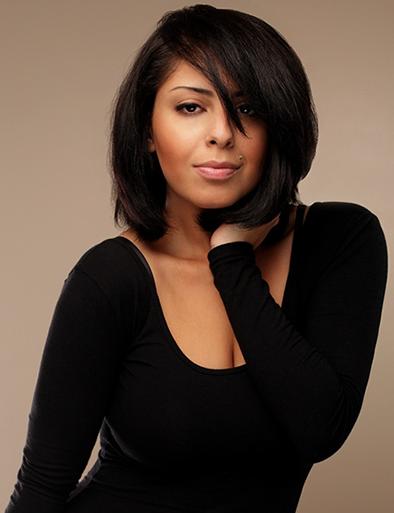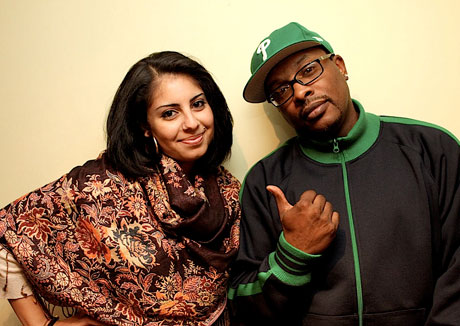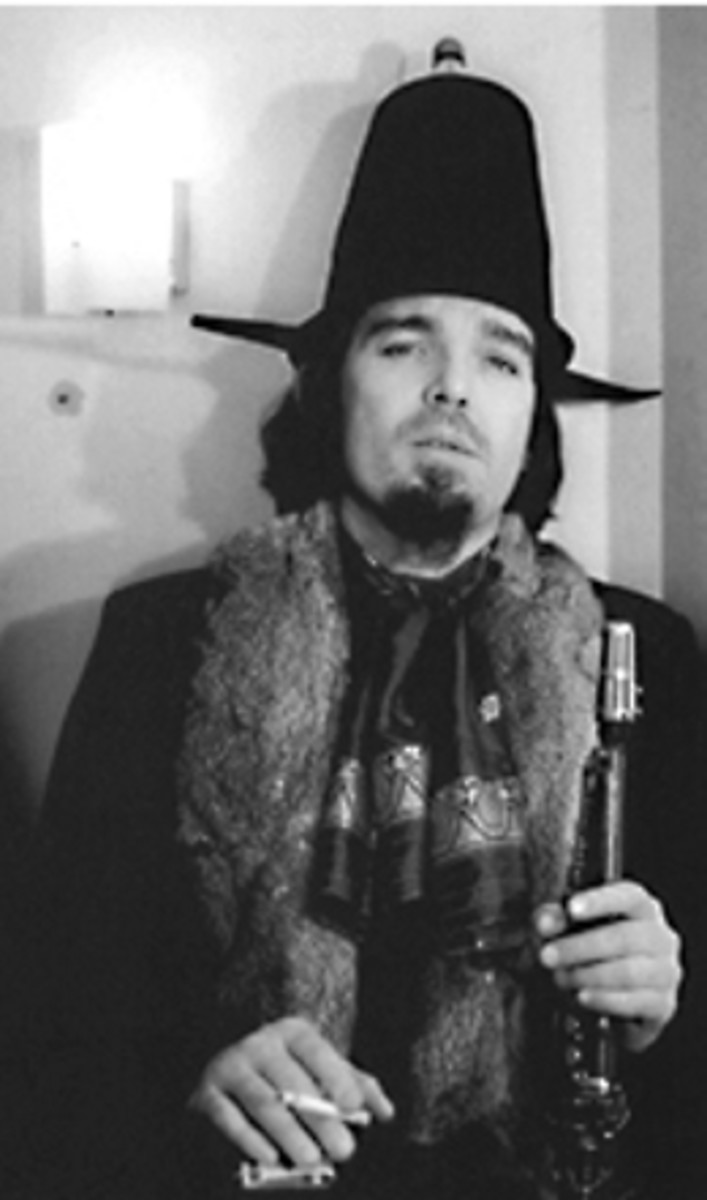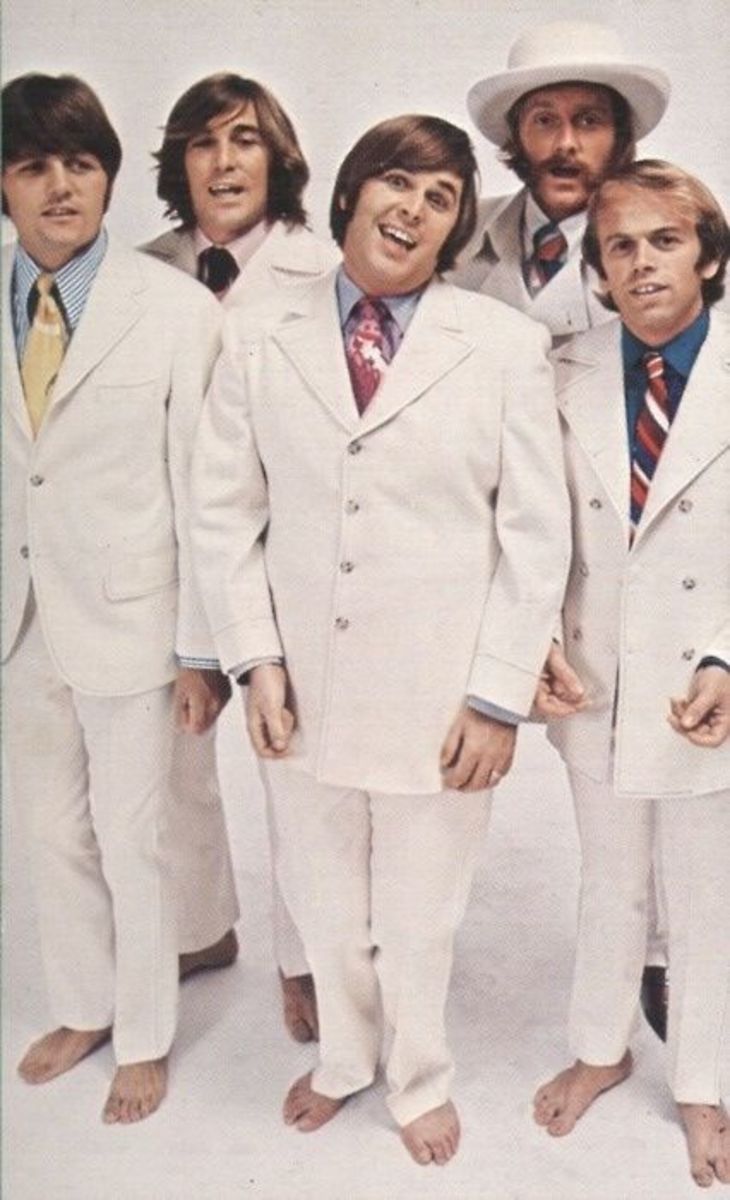New (to Me) Artist Spotlight: Ayah [a.k.a. Merna]

Most of the time, discovering new artists resembles a game of six degrees of separation for me. Such was the case with Ayah, another intriguing talent from Toronto that I found on the Last.fm website while doing research on my previous spotlight article. I saw her in the section for similar artists and decided to check out a few samples of her music. After listening to her, I honestly don’t understand why Ayah’s sound was considered to be such a strong match with that of the other artist; the readily noticeable similarities are few and far between, I think. Just another example of how the practice of tagging continues to confound... Anyway. Absent any complaints over the discovery, though, I’ll just attribute her presence there to the idea that I was meant to hear her sing.
Short Biography
Ayah, whose real name is Merna Bishouty, was born in Jordan. The stage name, Ayah, among several possible translations (mostly in a spiritual context referring to individual verses in the Holy Qur’an), means “miracle” or “sign” in Arabic. Over the years, Ayah’s travels have taken her from the Middle East to the U.S. and Canada. Along the way she was exposed to many different cultures and musical styles and also observed the character of varying social climates. Her parents were an especially powerful influence in her development by allowing her the freedom to explore the world around her and not hindering her need for self-expression and personal maturation.
From a young age, Ayah took an interest in music and began reading and singing song lyrics from the assorted collection of albums her parents had at home. With the help of a CD player capable of dubbing, Ayah and her friends often entertained themselves by substituting their own musical stylings for the muted vocals of popular tracks. By the age of 9, Ayah was delivering impromptu performances with in-house musicians at restaurants and also in the classroom at the request of her peers, who had come to appreciate her renditions of their favorite songs. In addition to singing, she continued to broaden her knowledge of music through playing the piano. By the time she was 14, it was not uncommon to find Ayah enjoying the reverberating effects of her singing voice in restrooms and stairwells with friends.
After high school, Ayah followed the traditional path to college and took an interest in the behavioral sciences. Her love for music, however, never abated, and she eventually realized that she could not effectively serve two masters. With a mindset that she could always continue her formal studies later, Ayah decided to postpone her college pursuits and give music a dedicated, full-time effort. She still retained some of the interests she had explored in college, however, and became actively involved in community initiatives designed to educate and mentor young people, such as the Remix Project in Toronto.

In 2008, Ayah released a mixtape collection called Problem Woman, a project inspired by Marvin Gaye’s music from Trouble Man. That same year, Ayah introduced herself to DJ Jazzy Jeff via MySpace. Upon receiving her inquiry about the possibility of collaborating, Jeff responded almost immediately (within minutes) and offered her a piece of music to work on. The track later appeared as “He Don’t Want It” on Ayah’s independently released EP, 4:15, in 2009. This body of work focused more on Ayah’s abilities as an original songwriter and also gave her the complete creative experience by allowing her to assume full control of the project through all stages of development. In 2011, she released a full album with Jeff called Back for More. With an eye toward her continued growth as an artist, Ayah’s ambitions have led her to perform and collaborate with other talents, such as Common, James Poyser, and Slakah the Beatchild.
The Sound
As is the case with most up-and-coming artists, there exists the always cumbersome task of offering sincere praise for present noteworthy accomplishments and also contributing well-intentioned criticism about perceived shortcomings. Ayah presents a challenge for me to describe because there are so many things to consider regarding her sound. I can’t say that her voice is strong enough to move mountains, but I can say that its piercing honesty nonetheless makes that same voice powerful. I can’t say that her groundbreaking musicianship defies all categorization, but I can say that her overall ability to maneuver effectively within and across categories places her in select company. I can’t say that her lyrical complexity is the terrestrial embodiment of modern esoteric compartmentalism heretofore hors concours among the contemporary stratum of ruckish commercial pedantry—(reader at this point probably thinking, “wtf”)—but I can say that her down-to-earth narrative style will effectively set the mood for many a casual listening session.
If I were to call Ayah a diamond in the rough, I would say that she cuts truer than any princess or round brilliant, and perhaps even benefits from the natural quality of her unpolished edges. While she does not often make the daring leaps of more adventurous types of vocalists, one can see that over the course of the years since her tracks on Problem Woman, Ayah has been pushing her voice and songwriting abilities a little more with each effort. As a singer, she has an assertive type of delivery—the sort that seems most concerned with capturing the reality of the story being told. With that, there emerges a strong sense of self-awareness in Ayah’s music, and a colloquial rhythm through the way she conveys certain words that adds a very potent spice of personality to each track. She combines this with an overall approach to composition that, I believe, makes for an enjoyable listening experience.
Ayah - Do It All Again
The Evolution of Ayah
The Problem Woman mixtape is best described as a concept-driven introduction to Ayah as a person and an artist. As such, it benefits greatly along the lines of structure by incorporating a large portion of the Trouble Man movie soundtrack to guide the overall tone of the work. The original Marvin Gaye instrumentals are particularly effective from a narrative standpoint. Not only do they give Ayah the opportunity to contribute her own lyrics on occasion, but also, when serving as background music for the radio interview/interlude portions, in which she discusses herself and her music, they become a mechanism for smooth transitioning, seamlessly integrating conversational material that listeners might otherwise consider to be intrusive. Although Problem Woman does not showcase a great deal of Ayah’s original work, the structure of the mixtape nonetheless proves that she knows how to recognize the important elements of a larger story and organize them in a way that establishes a unified listening experience.
Ayah certainly shows this sort of awareness in terms of narration with the 4:15 EP, a release that brings her songwriting skills to the forefront and manages to establish a sustained mood throughout. Thematically, the EP deals primarily with the different types of relationships that exist between people, and how these interactions affect the psyche of the individual trying to forge a separate personal identity while still appreciating the value of the collective. Along the way, Ayah confronts the feelings of confusion and insecurity that often arise from trying to form distinctions between reality and one’s perception of reality drawn from subjective circumstances. Ayah accomplishes her task in a very even fashion across a passionate collection, which, in my opinion, benefits from its brevity in that there is so little room to get sidetracked. In fact, “focused” is perhaps the most applicable word for 4:15, representing an approach not often taken when it comes to EPs. Even though Ayah shows that she can do much more as an artist, as demonstrated by the surprise genre shift included as a bonus at the very end (after a lengthy interval of silence), she has enough of a sense of musical cohesion to avoid disrupting the flow of the main work just for the sake of exhibiting her versatility.

Whether she brings the focus of 4:15 into Back for More is a question of a different character. There is a noticeable improvement from a lyrical perspective, and the project seems more polished as far as the tracks standing alone are concerned. With Back for More, Ayah seems to be consistently growing in terms of pushing her voice and engaging in more technically challenging lyrics.
With that said, however, the overall album somehow lacks the flow of 4:15, which, at least in my opinion, makes Back for More difficult to listen to in its entirety without skipping around, even though it has its fair share of good tracks. Those who follow my album reviews and spotlight articles know that I place a lot of emphasis on structure, and consequently listen to full albums differently based on what I consider to be the "less formal" nature of mixtapes and EPs. The same practice holds true for my views on Ayah’s collections, and my stance is perhaps even more critical because of the attention to detail she displayed in the work done before she reached an official “album” (as it’s classified on her website) with Back for More. The loose structure and musical/thematic variations in Back for More remind me of the approach most would choose for an EP or mixtape, and the focus of 4:15 resembles the path one would take for an album. In other words, 4:15 felt like it had a story to tell, and Back for More felt like it had stories to tell. Without a unified sound, the project, although establishing that Ayah can handle more varied types of production, loses some of the appeal of her earlier work—at least for me—from a structural perspective. Fortunately, though, I believe there is still enough solid material so as not to deter a casual listener from still enjoying it and wanting to see what Ayah has in store for the future.
Closing Thoughts
What I noticed about Ayah is that she’s the type of artist who is best appreciated after being afforded at least two listening sessions. Her music is the kind that needs time to settle in, I feel. This characteristic makes me hesitant to gauge her appeal on a larger scale because, while Ayah’s music has the potential to become a permanent fixture in many listeners’ preferred rotations, first impressions may not be strong enough for those with purely "hit single" sensibilities. Those who take the time, however, will no doubt discover that Ayah is an artist deserving of recognition, and certainly worth keeping an eye on.








